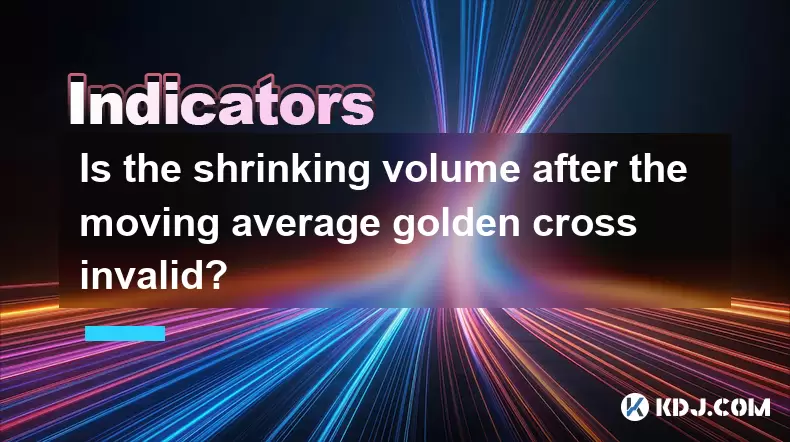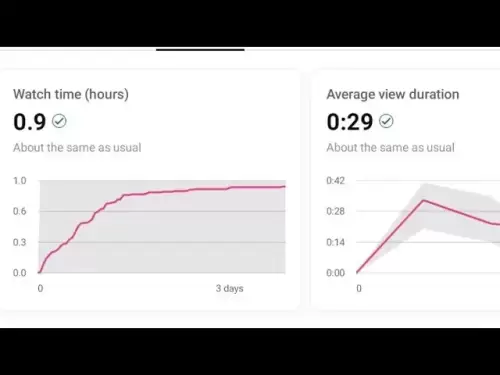-
 Bitcoin
Bitcoin $103,456.1111
0.49% -
 Ethereum
Ethereum $2,414.9631
0.02% -
 Tether USDt
Tether USDt $1.0006
0.05% -
 XRP
XRP $2.1083
0.24% -
 BNB
BNB $634.8760
-0.76% -
 Solana
Solana $139.8437
1.94% -
 USDC
USDC $0.9998
-0.01% -
 TRON
TRON $0.2737
0.97% -
 Dogecoin
Dogecoin $0.1602
0.20% -
 Cardano
Cardano $0.5737
1.08% -
 Hyperliquid
Hyperliquid $32.9779
-2.54% -
 Bitcoin Cash
Bitcoin Cash $474.8886
-1.80% -
 Sui
Sui $2.6272
-1.99% -
 Chainlink
Chainlink $12.4878
0.14% -
 UNUS SED LEO
UNUS SED LEO $8.9234
0.35% -
 Stellar
Stellar $0.2411
-0.18% -
 Avalanche
Avalanche $17.0274
-0.70% -
 Toncoin
Toncoin $2.8936
-1.11% -
 Shiba Inu
Shiba Inu $0.0...01112
-0.58% -
 Litecoin
Litecoin $82.6982
1.33% -
 Hedera
Hedera $0.1423
-0.05% -
 Monero
Monero $314.8455
3.26% -
 Ethena USDe
Ethena USDe $1.0006
0.01% -
 Polkadot
Polkadot $3.4043
1.14% -
 Dai
Dai $0.9999
0.01% -
 Bitget Token
Bitget Token $4.2848
-0.13% -
 Uniswap
Uniswap $6.8748
-5.45% -
 Pepe
Pepe $0.0...09661
0.52% -
 Pi
Pi $0.5359
1.19% -
 Aave
Aave $242.9168
-1.03%
Does the second surge in the RSI overbought zone induce more?
The RSI second surge into overbought territory can signal either trend continuation or weakening momentum, depending on price action, volume, and divergence.
Jun 22, 2025 at 08:35 am

Understanding the RSI Overbought Zone
The Relative Strength Index (RSI) is a momentum oscillator commonly used in technical analysis to measure the speed and change of price movements. It ranges from 0 to 100, with values above 70 typically considered overbought and values below 30 considered oversold. When the RSI enters the overbought zone for the first time, it signals that an asset may be overvalued or over-purchased. However, traders often wonder whether a second surge into the overbought zone provides additional insights or trading signals.
A second entry into the overbought territory doesn’t automatically mean a reversal is imminent. In strong uptrends, especially within highly volatile markets like cryptocurrency, the RSI can remain above 70 for extended periods. The key lies in interpreting the context of the movement, such as volume, trend strength, and candlestick patterns.
What Causes a Second Surge in the RSI Overbought Zone?
Several market dynamics can lead to a second rise in the RSI into the overbought region:
- Continuation of Bullish Momentum: After a brief pullback or consolidation, buyers may re-enter the market, pushing prices higher again.
- Volume Spikes: A sudden increase in buying pressure can push the RSI back into overbought levels even after a recent peak.
- News or Events: Positive developments around a cryptocurrency project can trigger renewed interest, leading to multiple surges in RSI readings.
In many cases, especially during bull runs, the RSI can touch 80 or even 90 without any significant pullback. Therefore, understanding why the second surge happens is crucial before making any trading decisions.
How to Interpret a Second Surge in RSI: Divergence vs Confirmation
One of the most critical aspects of analyzing a second surge in the RSI overbought zone is determining whether it confirms the ongoing trend or hints at a potential reversal. Here's how to differentiate:
Trend Confirmation: If the price makes a new high alongside the RSI reaching overbought levels again, this indicates strong bullish momentum. This situation often occurs during healthy uptrends where dips are quickly bought up.
Hidden Divergence: Sometimes, the price continues upward while the RSI fails to reach its previous high. This is known as hidden divergence and can signal weakening momentum.
Bullish Rejection: If the price pulls back but finds support and then rallies, causing the RSI to surge again, this might indicate strong institutional or whale accumulation.
Each scenario requires careful chart reading and should be cross-verified with other tools like moving averages or volume indicators.
Trading Strategies Around the Second RSI Overbought Surge
For traders, recognizing a second surge in the RSI overbought zone opens several strategic opportunities:
Riding the Trend: In strong uptrends, especially on higher timeframes like 4-hour or daily charts, entering long positions when RSI re-enters overbought can be profitable if supported by volume and trendline integrity.
Scalping Opportunities: Short-term traders can look for quick moves when RSI spikes again after a consolidation phase, particularly if there’s confluence with resistance breakouts or Fibonacci extensions.
Risk Management Adjustments: Traders who prefer counter-trend strategies might wait for bearish candlestick formations or RSI hook reversals near overbought levels to short-sell.
It’s important to note that no single indicator should be used in isolation. Combining RSI behavior with support/resistance levels, candlestick patterns, and volume analysis increases accuracy.
Common Pitfalls When Analyzing RSI Surges
Many traders fall into traps when interpreting RSI readings, especially during multiple surges into the overbought zone:
Assuming Immediate Reversal: Just because RSI hits overbought twice doesn't mean a reversal will follow immediately. In trending markets, RSI can stay elevated for long periods.
Ignoring Timeframe Context: A surge on a 15-minute chart may not carry the same weight as one on a daily chart. Always consider the broader trend.
Neglecting Volume Analysis: A second surge accompanied by declining volume may indicate fading momentum, whereas increasing volume supports continuation.
Avoiding these pitfalls requires discipline and objective analysis rather than emotional reactions to overbought conditions.
FAQs
Q: Can RSI stay overbought for a long time in crypto markets?
Yes, especially during strong uptrends. Cryptocurrencies are highly volatile and often experience prolonged periods where RSI remains above 70 due to sustained buying pressure.
Q: Is a second RSI overbought surge always a sell signal?
No, it depends on the broader market context. In a healthy uptrend, a second surge can be a continuation signal rather than a reversal.
Q: How can I distinguish between a healthy RSI surge and a warning sign?
Look for divergence, volume changes, and price action. If the price is still making higher highs and the RSI confirms with similar peaks, it's likely a healthy trend.
Q: Should I use RSI alone to make trading decisions?
It’s generally advised to combine RSI with other tools like moving averages, volume indicators, and candlestick patterns to improve accuracy.
Disclaimer:info@kdj.com
The information provided is not trading advice. kdj.com does not assume any responsibility for any investments made based on the information provided in this article. Cryptocurrencies are highly volatile and it is highly recommended that you invest with caution after thorough research!
If you believe that the content used on this website infringes your copyright, please contact us immediately (info@kdj.com) and we will delete it promptly.
- Inherited Riches: Rare Coin Collection Valued at £6,000 – Is Your Change Worth a Fortune?
- 2025-06-22 12:25:12
- Fiat-Backed Stablecoins, Tokenized Treasuries, and DeFi: A New York Minute on the Future of Finance
- 2025-06-22 12:25:12
- BlockDAG, Tron, and Toncoin: Navigating the Crypto Landscape in 2025
- 2025-06-22 12:35:12
- Navigating the Wild West: Rug Pulls, Meme Coins, and Market Scams in Crypto
- 2025-06-22 12:35:12
- Ruvi AI: The Audited Token Poised to Outshine Shiba Inu
- 2025-06-22 10:25:12
- Dypians, DeFi, and Sei Network: A Deep Dive into the Latest Trends
- 2025-06-22 10:25:12
Related knowledge

Does the second surge in the RSI overbought zone induce more?
Jun 22,2025 at 08:35am
Understanding the RSI Overbought ZoneThe Relative Strength Index (RSI) is a momentum oscillator commonly used in technical analysis to measure the speed and change of price movements. It ranges from 0 to 100, with values above 70 typically considered overbought and values below 30 considered oversold. When the RSI enters the overbought zone for the firs...

Does the sudden contraction of ATR indicate the end of the trend?
Jun 20,2025 at 11:14pm
Understanding ATR and Its Role in Technical AnalysisThe Average True Range (ATR) is a technical indicator used to measure market volatility. Developed by J. Welles Wilder, ATR calculates the average range of price movement over a specified period, typically 14 periods. It does not indicate direction—only volatility. Traders use ATR to gauge how much an ...

Is it invalid if the DMI crosses but the ADX does not expand?
Jun 21,2025 at 09:35am
Understanding the DMI and ADX RelationshipIn technical analysis, the Directional Movement Index (DMI) consists of two lines: +DI (Positive Directional Indicator) and -DI (Negative Directional Indicator). These indicators are used to determine the direction of a trend. When +DI crosses above -DI, it is often interpreted as a bullish signal, while the opp...

How to filter false signals when the SAR indicator frequently flips?
Jun 21,2025 at 08:43pm
Understanding the SAR Indicator and Its BehaviorThe SAR (Stop and Reverse) indicator is a popular technical analysis tool used in cryptocurrency trading to identify potential reversals in price movement. It appears as a series of dots placed either above or below the price chart, signaling bullish or bearish trends. When the dots are below the price, it...

Is the trend continuation when the Williams indicator is oversold but there is no rebound?
Jun 20,2025 at 11:42pm
Understanding the Williams %R IndicatorThe Williams %R indicator, also known as the Williams Percent Range, is a momentum oscillator used in technical analysis to identify overbought and oversold levels in price movements. It typically ranges from 0 to -100, where values above -20 are considered overbought and values below -80 are considered oversold. T...

Is the shrinking volume after the moving average golden cross invalid?
Jun 22,2025 at 10:42am
Understanding the Moving Average Golden Cross in CryptocurrencyIn the world of cryptocurrency trading, technical indicators play a crucial role in decision-making. One such indicator is the moving average golden cross, which occurs when a short-term moving average crosses above a long-term moving average, typically signaling a bullish trend. This event ...

Does the second surge in the RSI overbought zone induce more?
Jun 22,2025 at 08:35am
Understanding the RSI Overbought ZoneThe Relative Strength Index (RSI) is a momentum oscillator commonly used in technical analysis to measure the speed and change of price movements. It ranges from 0 to 100, with values above 70 typically considered overbought and values below 30 considered oversold. When the RSI enters the overbought zone for the firs...

Does the sudden contraction of ATR indicate the end of the trend?
Jun 20,2025 at 11:14pm
Understanding ATR and Its Role in Technical AnalysisThe Average True Range (ATR) is a technical indicator used to measure market volatility. Developed by J. Welles Wilder, ATR calculates the average range of price movement over a specified period, typically 14 periods. It does not indicate direction—only volatility. Traders use ATR to gauge how much an ...

Is it invalid if the DMI crosses but the ADX does not expand?
Jun 21,2025 at 09:35am
Understanding the DMI and ADX RelationshipIn technical analysis, the Directional Movement Index (DMI) consists of two lines: +DI (Positive Directional Indicator) and -DI (Negative Directional Indicator). These indicators are used to determine the direction of a trend. When +DI crosses above -DI, it is often interpreted as a bullish signal, while the opp...

How to filter false signals when the SAR indicator frequently flips?
Jun 21,2025 at 08:43pm
Understanding the SAR Indicator and Its BehaviorThe SAR (Stop and Reverse) indicator is a popular technical analysis tool used in cryptocurrency trading to identify potential reversals in price movement. It appears as a series of dots placed either above or below the price chart, signaling bullish or bearish trends. When the dots are below the price, it...

Is the trend continuation when the Williams indicator is oversold but there is no rebound?
Jun 20,2025 at 11:42pm
Understanding the Williams %R IndicatorThe Williams %R indicator, also known as the Williams Percent Range, is a momentum oscillator used in technical analysis to identify overbought and oversold levels in price movements. It typically ranges from 0 to -100, where values above -20 are considered overbought and values below -80 are considered oversold. T...

Is the shrinking volume after the moving average golden cross invalid?
Jun 22,2025 at 10:42am
Understanding the Moving Average Golden Cross in CryptocurrencyIn the world of cryptocurrency trading, technical indicators play a crucial role in decision-making. One such indicator is the moving average golden cross, which occurs when a short-term moving average crosses above a long-term moving average, typically signaling a bullish trend. This event ...
See all articles
























































































